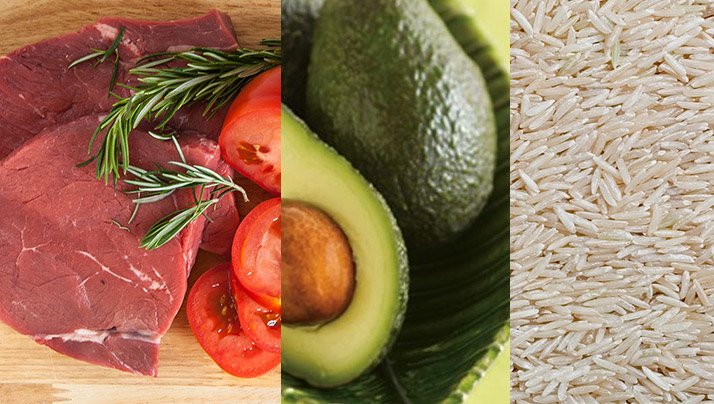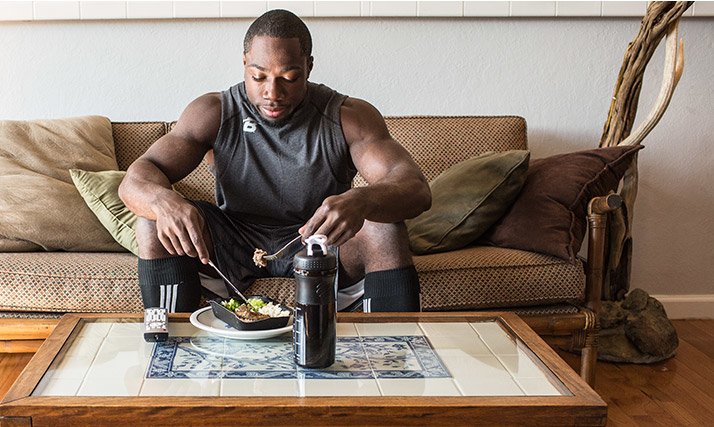
How To Increase Strength While Losing Body Fat
Training for strength while trying to lose weight can drive you crazy. Find out how to do it right with tips from one of the top lightweight strongman athletes in the world!
It's normal to want to tackle a six-pack and a 400-pound squat at the same time, but if you're at a zero-pack and a 225-pound squat, you've got a long way to go in both directions. What's worse, working toward both shred and strength at the same often results in either a significant loss of strength, or the scale not budging.
I learned this the hard way when I set my sights on getting stronger and leaner at the same time to fulfill my weight class in competitive strongman competitions. Yes, I dropped 20 pounds quickly, but I also watched my testosterone and energy drop to an all-time low.
Fortunately, I learned from my missteps, and I'm now able to maintain a nutritional approach that allows me to hang with my insanely strong competition. It wasn't easy, and it took a lot of time, dedication, and learning. But it can be done, and you don't have to be a strongman to make it work.
Here's what you need to know about chipping away at the pounds on the scale and placing them on the bar!
Calories Matter!
There's no way around calorie balance; if you want to lose weight, you must be taking in fewer calories than you expend. When all other variables such as your training, macro amounts, and nutrient timing are in place, you can absolutely gain strength while in a deficit. However, it's important to be patient and start from an appropriate caloric deficit.
Cutting weight too quickly will inevitably limit your strength potential. Don't go down that road. On the other hand, cutting weight healthily and gaining strength both take time—and doing both simultaneously requires even more time. Think months, not weeks. And it starts with a slight calorie deficit.
To figure out the calories you need to place yourself into a slight deficit, first plug your information into the calculator below. This will provide you with an estimate of the number of calories you need to maintain your current weight. Then, subtract 300 calories and track your food intake and weight over the next 5-10 days.
Calorie Calculator
After this period of time, evaluate the trend in weight change—did you gain, maintain, or lose weight? Adjust as necessary to place yourself in a slight deficit to drive weight loss. Aim to lose 0.5-1.0 pounds per week, and no more.
If you feel your strength start to slip, increase your calories a bit so that you're on the lower end of this range.
How Much Should I Eat?
For those seeking a purely physique-based goal, it's commonplace to determine protein and fat macros before "filling" the remaining calories with carbohydrates. However, when performance is the goal, I recommend prioritizing protein and carbohydrates to support hard training.

Protein: Nothing fancy here. Strength athletes need at least 1.0-1.25 grams per pound of body weight each day to support muscle preservation and satiety.
Carbohydrates: Carbohydrates are your muscles' primary energy source. I can't stress this enough for strength and power athletes. To support hard training and your body-composition goals, align your carbohydrate intake with your daily energy demands. I'll definitely manipulate my carb intake around training sessions and rest days, but I don't recommend cutting carbs to spur fat loss except when absolutely necessary.
For typical training sessions, take in 1-1.5 grams per pound of body weight per day. For lighter sessions, reduce your intake to 0.75-1.0 grams per pound of body weight, and for nontraining days, reduce that number to less than 0.75 grams. Play around with different ends of each range to find an ideal amount that fuels training and recovery, but also fits into your daily calorie allotment.
Fat: Fat is essential for cell communication within the body, nutrient storage, and optimal hormonal health. Keep total daily fat intake at or above 15 percent of total calories at all times. Dipping below this threshold will inevitably lead to a drop in testosterone levels (which negatively impacts performance), sub-optimal recovery, and potential health problems.1-3
Diet Adjustments to Keep Weight Loss Coming
To fuel for consistent weight loss and strength gains, you must manipulate your nutrition strategically. Once your weight loss stalls—based on multiple weigh-ins over a period of 5-10 days—proceed by making adjustments in the following manner:
Drop fat intake first. Remember, carbohydrates are your muscles' primary energy source. We want to spare them as long as possible to support performance.
Once fat nears 15 percent of total calories, begin reducing carbohydrates. I recommend first dropping carbohydrates from your pre-workout meal and any subsequent meal outside the immediate post-workout meal. I have found that always consuming 0.75 grams of carbohydrates per pound of body weight at the post-workout meal helps me refuel for my next workout.
Never reduce protein.
The next level: nutrient timing
Gaining strength alone is difficult enough. A calorie deficit ups the ante even more. Nutrient timing is what separates good results from great results. By paying attention to how much you eat and when you eat throughout the day, you can do a lot to enhance body composition and performance.

Protein: Hitting your daily protein goal is important, but it's equally important to distribute protein intake across all meals throughout the day to hit a minimum amount every few hours. Failure to consume enough high-quality protein at each meal or snack results in lackluster stimulation of muscle-building.4
For most athletes, this means regularly consuming 25-35 grams of protein from quality sources. Any less, and it's pretty hard to meet your daily markers. But hitting these will help you provide the cellular machinery responsible for initiating muscle growth and recovery with the fuel it needs to execute multiple times per day.
Carbohydrates: To top off your fuel tank and support recovery, it's imperative that you consume ample carbohydrates around training.
I've found that placing most of my carbohydrates in the meals after my training has allowed me to continue performing well while leaning out. I recommend consuming 80 percent of your carbohydrates after training. The remainder can be placed in your pre-workout meal.
For a 200-pound individual consuming 250 grams of carbohydrates per day (1.25 multiplied by body weight), the distribution may look like this:
- Pre-workout meal containing between 25-50 grams of carbohydrates
- Post-workout meal 30-60 minutes after training, consisting of 100 grams of carbohydrates
- A second meal of 100 grams of carbohydrates 1-2 hours later
Fat: I recommend consuming the majority of your fat away from training, because fat slows down digestion, delaying delivery of protein and carbohydrates to your muscles. Keep fat to a minimum at both your pre- and post-workout meal to optimize performance and recovery.
Calorie Cycling to Support Performance
Rotating calories to match my training volume is a strategy I have found to be crucial. It allows me to slowly chip away at body fat by maintaining a daily slight caloric deficit while still supporting hard training.

Think about it: By setting a blanket intake of 2,400 calories per day, you may very well be in a deficit on your harder training days, but potentially in a surplus on your light and off days. Adjusting intake to coincide with your training will ensure you consistently take steps toward leaning out, rather than fluctuating throughout the week.
Don't go slashing calories at random, however. To optimize this approach, keep protein and fat stable across the board, but manipulate carbohydrates. On lower-intensity days, knock carbohydrates down a notch to compensate for decreased energy expenditure. As I mentioned earlier, I aim for around .75 grams or less.
There's no reason to tweak fat day to day to compensate for a change in your carbohydrates. If you increased fat on lighter training days, you'd eliminate the caloric deficit that was created by reducing carbohydrates.
This is a simple system that allows you to eat adequate amounts of food while still chipping away progressively at your fat reserves. Stick with it long enough, and you'll surprise yourself at what you're able to achieve—and how good you feel doing it.
References
- Strauss, R. H., Lanese, R. R., & Malarkey, W. B. (1985). Weight loss in amateur wrestlers and its effect on serum testosterone levels. Jama, 254(23), 3337-3338.
- Gromadzka-Ostrowska, J. (2006). Effects of dietary fat on androgen secretion and metabolism. Reproductive Biology, 6(Suppl 2), 13-20.
- Hämäläinen, E., Adlercreutz, H., Puska, P., & Pietinen, P. (1984). Diet and serum sex hormones in healthy men. Journal of Steroid Biochemistry, 20(1), 459-464.
- Mamerow, M. M., Mettler, J. A., English, K. L., Casperson, S. L., Arentson-Lantz, E., Sheffield-Moore, M., ... & Paddon-Jones, D. (2014). Dietary protein distribution positively influences 24-h muscle protein synthesis in healthy adults. The Journal of Nutrition, 144(6), 876-880.

